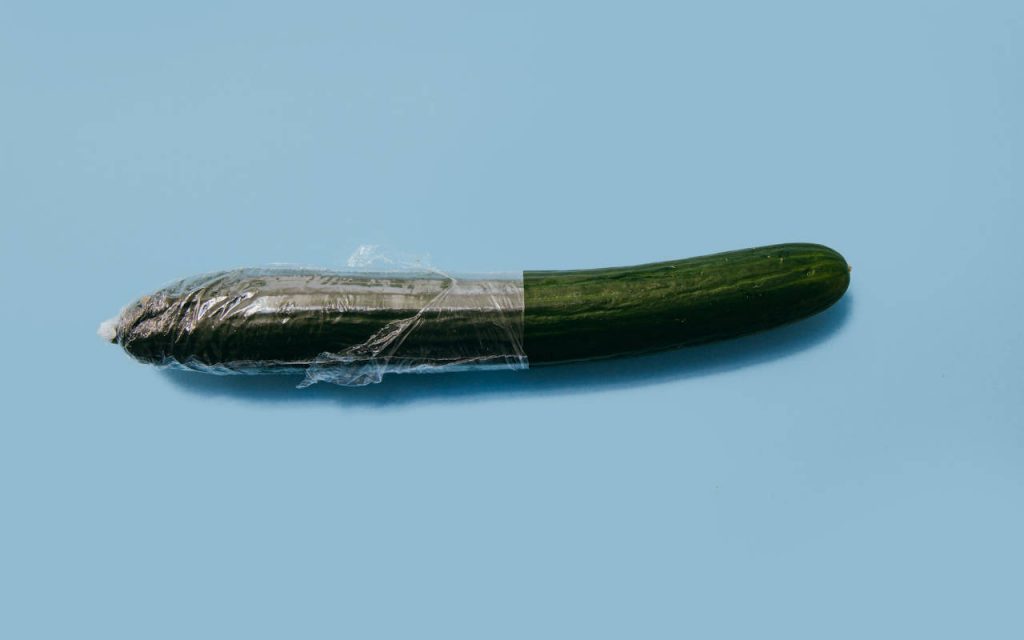Polythene is an essential part of the food industry. It preserves, protects, and packages our food in a way no other material can. It keeps dry foods dry, and moist foods moist. Contamination risks are lowered, making the food we eat safer. It keeps costs down, and contributes to fewer carbon emissions and production pollutants than paper or glass.
But it’s not just essential for packaging. Polythene is widely used in agriculture, food production, logistics and storage – the entire process. It’s so important that if we banned polythene, the entire global food supply chain would collapse overnight.
Because all polythene is created equally, there are a few points to consider when using polythene for food, depending on the stage of farming, transportation, or production – until it’s time to eat.
Let’s run through the ways polythene is used in the food industry, from farm to plate.

How is polythene used in the food industry?
Before we can make frozen pizzas, sausages, or even bag up a bundle of shelled peas, we have to grow the food we eat. And polythene helps us do that, even at the first stages.
Growing food
Heavy duty polythene bags, made with coloured polythene and UV additives, are commonly used as grow bags – even on an industrial scale. The bags reduce water and pesticide use, and retain more nutrients for the crop. They also reduce the amount of labour required to grow food – because the soil no longer has to be worked so extensively before seeds are sown.
Read more – Polythene for Farming and Agriculture
After harvesting, larger crops will be distributed to manufacturers, packaging facilities and sometimes to shops, to be sold whole. And moving food requires protection – both for the food and the transit medium.
Pallet box liners (also called dolav liners) are used for this. They are gusseted polythene bags, designed to fit inside plastic pallet boxes. Dolav liners contain and protect food in transit, folding over to cover the food and protect it from contamination as it’s transported away.
The fully loaded pallets themselves need to be wrapped and protected, too – and shrink pallet covers are often used as a quick, safe way to cover a palletised load.
From the farm and first stages of processing, food will either go on to be packed for sale, or to factories for further processing.
Processing and packaging
Any number of things can happen here, and the spectrum of foods is so wide, we couldn’t possibly cover it all here in one sitting! Just about every food you’ve got in your cupboard, fridge, or freezer – be it a block of cheese, a frozen pizza, or a pouch of spice mix – needs polythene, at least at storm stage, to be made.
But here’s one example; let’s say a crop of potatoes has been transported to a factory that makes frozen chips. After coming out of their protective transport packaging, the potatoes will be washed and peeled – and those skins will probably get mulched and bagged, too. They can be used as compost, animal feed, or have their starch extracted for food additives.
The potato flesh will then be chipped, par-cooked, and then flash frozen – before being weighed out and bagged up. These bags might actually be made by the factory’s own automated process – folding and sealing coloured and printed single wound polythene sheeting into chip bags.
These bags then get loaded onto pallets, wrapped, and stored in huge freezers, awaiting transport by refrigerated lorries. Then, the chips are off to the supermarket, or your local chippy – before they finally go home with you.
The polythene used for bagging up these chips must be made of virgin material, to avoid risk of contamination, and also has to be treated with an additive that prevents the material becoming brittle when frozen.
And it has to be certified as food-grade, too.
Food grade polythene: what’s the difference?
Food-grade polythene has a higher standard than other types, because it can impact public health. It must meet the rules set out by the Food Standards Agency (FSA):
If you wrap or package food as part of your business then you must:
- Use material that will not be a source of contamination for wrapping and packaging
- Store wrapping materials so they are not at risk of contamination
- Wrap and package the food in a way that avoids contamination of products
- Make sure that any containers are clean and not damaged
- Be able to keep the wrapping or packaging material clean
Food-grade polythene is essentially the same material, bar any additional additives, but it has been treated with extra care and separated from other grades – to ensure cleanliness and food safety. Polythene manufacturers and distributors should hold an ISO 9000 certificate, as a mark that they meet those standards.
Advantages of polythene over other food-safe plastics
The FSA lists PVC and polystyrene among other food safe plastics (like polythene and acrylic).
However, a report issued by the FSA itself states that “PVC was the most toxic polymer type” in testing – and other studies have found polystyrene could be cancer-causing, particularly when used with hot food.
Polythene is non-reactive and inert, with no known toxicity, and so is the safest choice for food packaging.
With so many colour options, functional additives, printability, and a low cost per unit – it’s one of the most versatile, too.
Safe polythene for every stage of food production
Order food grade polythene from NPF Packaging – the polythene packaging experts. Get a quote now, or call us on 01773 820415 to get started.


